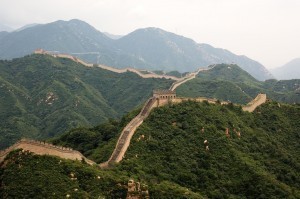Biggest National Landmark
National landmarks make each country unique. These not only serve as major tourist attractions, they also serve as distinct features of each country; making these countries more easily remembered by people from all over the world.
Landmarks may be natural or man-made and these may come in various dimensions. Depending on their current condition, their level of importance and many other factors; some of these national landmarks have been inscribed by UNESCO as World Heritage Sites.
Biggest National Landmark
The Great Wall of China may well be considered as the biggest national landmark in the world. The Great Wall extends to several provinces in the country, spanning a distance of approximately five thousand and five hundred miles.
This size is equivalent to approximately eight thousand eight hundred and fifty-one kilometers.
China’s Great Wall extends from Shanhaiguan on its eastern border, Lop Nur on its western border and Inner Mongolia’s southern edge.
Based on in-depth archeological studies, the actual wall measures about three thousand eight hundred and eighty-nine miles or approximately six thousand two hundred and fifty-nine kilometers.
 The wall’s trenches measures about two hundred and twenty-three miles or three hundred and fifty-nine kilometers; while the natural defensive barriers measure approximately one thousand three hundred and eighty-seven miles or roughly two thousand two hundred and thirty-two kilometers.
The wall’s trenches measures about two hundred and twenty-three miles or three hundred and fifty-nine kilometers; while the natural defensive barriers measure approximately one thousand three hundred and eighty-seven miles or roughly two thousand two hundred and thirty-two kilometers.
All of the above measurements make up the total extent of the wall, which is approximately five thousand and five hundred miles; as previously mentioned. This total coverage makes The Great Wall of China indeed the biggest national landmark to date. The Wall was inscribed as a UNESCO World Heritage Site in the year 1987.
Brief History
This biggest national landmark was first built with the intention of protecting the Chinese Empire’s northern borders from invasion by nomads. Since the fifth BC, several walls have been constructed and jointly, these have been referred to as The Great Wall of China.
Portions of the wall have been rebuilt over time, specifically between the periods of the fifth BC up until the sixteenth century. One particular section of this biggest national landmark that is most popular among tourists and locals as well is the section that was built by China’s very first Emperor, Qin Shi Huang between 220 and 206 BC.
Although not much of this section of the wall remains today, it is still widely-visited by both locals and tourists alike. A large majority of the wall that remains in good condition was the section that was erected during the Ming Dynasty.
Although there have been claims that this biggest national landmark is visible from the moon, there has been no clear evidence or proof of this claim to date.





